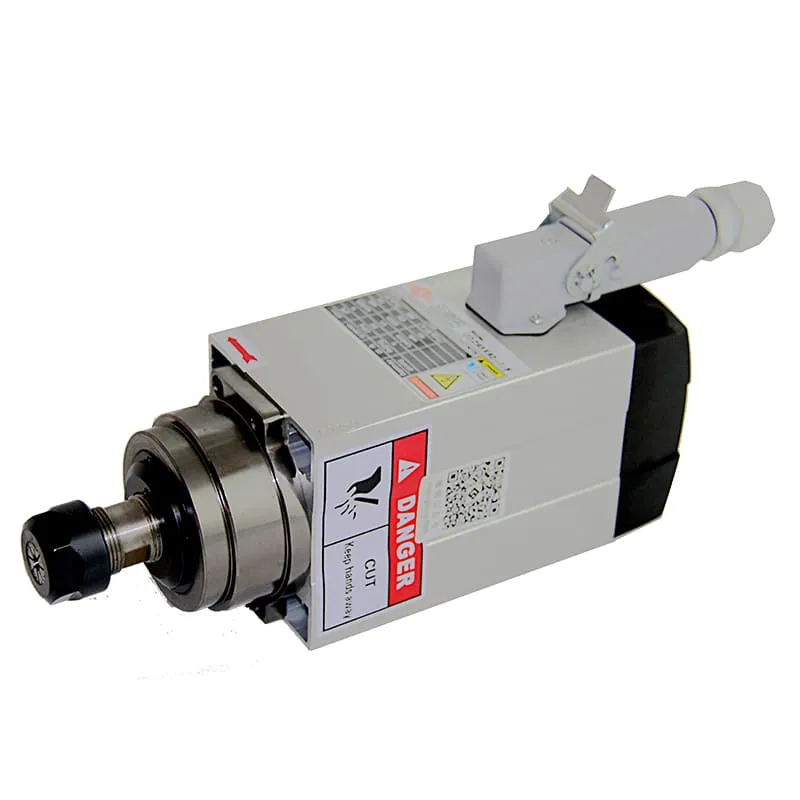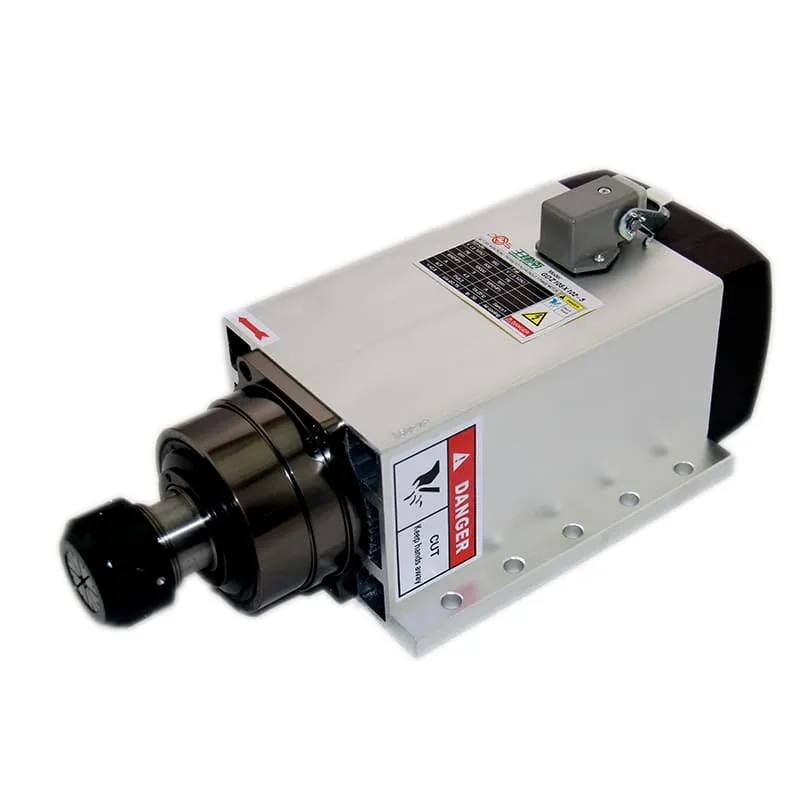What Is CNC Milling?
CNC milling is a key part of modern manufacturing, allowing for the precise and efficient shaping of materials into specific parts. If you are wondering what exactly CNC milling is, how it works, and its applications, then you’ve come to the right place. In this guide, we will dive deep into what CNC milling is, the different types of milling machines, the tools used, and the many benefits it provides in the manufacturing sector.
Understanding CNC Milling
CNC milling, or Computer Numerical Control milling, is a manufacturing process that utilizes computer-controlled rotating cutting tools to systematically remove material from a workpiece. This process is highly regarded for its precision, which makes it ideal for creating complex parts that require tight tolerances.
- Milling Process: In CNC milling, a cutting tool—often called a milling cutter—is used to rotate at high speeds. The workpiece remains stationary while the tool removes unwanted material.
- Control and Precision: CNC milling machines use a computer program written in G-code to control all aspects of the process. This program allows for precise positioning, movement, and cutting.
Key Components of a CNC Milling Machine
To understand CNC milling better, it’s crucial to familiarize yourself with the core components of a CNC milling machine:
- Spindle: This is the part of the milling machine that holds and spins the cutting tool. Using a reliable spindle like the 2.2KW ER16 Air-Cooled Spindle helps achieve precision during machining.
- Milling Table: The workpiece is placed and secured on the milling table.
- Cutter: Various types of cutting tools can be used for CNC milling depending on the operation and the type of material.

Types of CNC Milling Machines
There are different types of CNC milling machines, each designed to perform specific tasks. Let’s explore some of the most common types.
1. Vertical Milling Machine
A vertical milling machine is characterized by a spindle that is oriented vertically, allowing the cutting tool to move up and down.
- Advantages: Vertical milling machines are easy to set up and operate, making them ideal for smaller parts that do not require complex geometries.
- Applications: Typically used for face milling and plain milling operations.
2. Horizontal Milling Machine
A horizontal milling machine has a spindle that is positioned horizontally, allowing the cutting tool to move side to side.
- Capabilities: Ideal for heavy-duty milling and creating slots or grooves.
- Benefits: Horizontal milling machines can accommodate longer and bulkier workpieces.
For both vertical and horizontal milling machines, components such as the 1.5KW ER20 Square Air-Cooled Spindle can enhance the machine’s capabilities by providing reliable and precise cutting.

3. 5-Axis CNC Milling Machine
The 5-axis CNC milling machine can move along five different axes simultaneously, allowing for the production of highly complex parts.
- Versatility: It is perfect for manufacturing components that require intricate designs, such as aerospace parts.
- Increased Accuracy: By rotating and tilting the workpiece, the machine ensures high precision, reducing the need for multiple setups.
How CNC Milling Works
CNC milling involves several steps to take a piece of raw material and turn it into a finished product. Here’s a detailed look at how CNC milling works.
1. Preparing the Workpiece
The process starts by securing the workpiece on the milling table. It must be held tightly using clamps or a vice to prevent movement during machining.
- Workpiece Materials: CNC milling can handle a variety of materials, including metals, plastics, and wood.
2. Programming
Next, the machine is programmed using G-code, which contains instructions for tool paths, feed rates, and depths of cuts. The programming can be done manually or by using CAD/CAM software.
- CAD/CAM Software: CAD (Computer-Aided Design) software is used to create a digital design, which is then converted into a G-code program through CAM (Computer-Aided Manufacturing) software.
3. Cutting the Material
The spindle rotates the cutting tool at a set speed while the machine follows the G-code to remove excess material and shape the workpiece.
- Spindle Performance: The performance of the spindle can greatly impact the outcome of the milling process. Using an efficient spindle like the 3.5KW ER25 Air-Cooled Spindle is critical for maintaining consistency.

4. Finishing
Once the cutting process is complete, the workpiece undergoes finishing operations, such as deburring or polishing, to improve surface quality and accuracy.
CNC Milling Operations
CNC milling machines can perform various operations to achieve the desired shape and design of a component. Here are some of the most common milling operations.
1. Face Milling
Face milling involves cutting across the top surface of the workpiece to create a smooth, flat finish. This operation typically uses end mills.
- Tool Selection: The right milling tool is crucial for achieving the required surface finish.
2. Peripheral Milling
Also known as plain milling, this operation cuts along the edge of the workpiece to create a smooth surface. It is often used to reduce the thickness of materials.
- Applications: Ideal for creating large, flat surfaces.
3. Form Milling
Form milling is used to cut irregular shapes, such as gears or complex contours. Special form cutters are required for this type of milling.
- Complexity: This operation allows for more intricate designs, making it essential for certain automotive and aerospace parts.
4. Slotting
Slotting involves cutting slots into the workpiece. It is commonly used for creating keyways or grooves in gears and pulleys.
Benefits of CNC Milling
CNC milling offers a variety of advantages that make it indispensable in modern manufacturing processes.
- Precision and Accuracy: CNC milling is known for its precision, allowing for the production of complex parts with extremely tight tolerances.
- Efficiency: Once the machine is programmed, it can produce large quantities of parts with consistent quality, making it ideal for mass production.
- Versatility: CNC milling machines can work with a wide variety of materials, ranging from soft plastics to hardened steel.
Improved Productivity
CNC milling greatly improves productivity, especially when using high-quality components like the 4.5KW ER32 Air-Cooled Spindle.

- Automation: CNC milling machines can operate continuously, 24/7, requiring minimal manual intervention. This level of automation reduces downtime and increases productivity.
Applications of CNC Milling
The applications of CNC milling are widespread across multiple industries due to the precision and versatility of these machines.
1. Automotive Industry
In the automotive industry, CNC milling is used to manufacture various parts, including engine components, gearboxes, and transmission parts.
- Complex Parts: CNC milling is ideal for creating the complex geometries often required in automotive design.
2. Aerospace Industry
The aerospace sector demands high precision for safety and functionality. CNC milling is used to create aircraft components, brackets, and engine parts.
- High Tolerances: Components manufactured for the aerospace industry must meet stringent quality standards.
3. Medical Equipment Manufacturing
In medical device manufacturing, CNC milling plays a crucial role in producing intricate components for surgical tools, prosthetics, and implants.
- Material Flexibility: CNC milling can handle biocompatible materials like titanium, stainless steel, and certain medical-grade plastics.
Comparing CNC Milling to CNC Turning
CNC milling and CNC turning are both used to create parts, but they differ significantly in how they operate.
1. CNC Milling
- Cutting Tool Movement: In CNC milling, the cutting tool rotates, while the workpiece remains stationary.
- Complex Parts: CNC milling is ideal for creating complex shapes, including slots and cavities.
2. CNC Turning
- Rotating Workpiece: In CNC turning, the workpiece rotates, and the cutting tool is moved into the workpiece to shape it.
- Cylindrical Parts: CNC turning is best for producing cylindrical components such as shafts and bushings.
Challenges in CNC Milling and Solutions
Operating a CNC milling machine comes with certain challenges, particularly for those new to the process. Here are some common issues and how to overcome them.
1. Tool Breakage
Tool breakage is a common challenge, especially when milling tough materials.
- Solution: Choosing the right cutting tool and properly setting the spindle speed and feed rate can help reduce the risk of tool breakage. Additionally, using coolant during machining can minimize heat buildup and prolong tool life.
2. Material Movement
Sometimes, the workpiece may shift or move during the milling process, leading to inaccuracies or defective parts.
- Solution: Ensure the workpiece is tightly secured to the milling table using appropriate clamps or a vice. Rechecking the setup before starting the operation can also help prevent material movement.
3. Programming Errors
Errors in the G-code can lead to defective parts, tool crashes, or even machine damage.
- Solution: Double-check the G-code before running it on the machine. Most CAD/CAM software includes simulation features that allow you to preview the toolpath and identify any issues before cutting begins.
FAQs on CNC Milling
1. What materials can be milled using a CNC milling machine?
CNC milling machines can handle a variety of materials, including metals (steel, aluminum, brass), plastics, and even wood. The versatility of materials makes CNC milling suitable for numerous industries.
2. How does CNC milling differ from CNC turning?
CNC milling involves the rotation of the cutting tool, whereas CNC turning involves the rotation of the workpiece. Milling is ideal for creating complex shapes, while turning is used for cylindrical components.
3. What is a 5-axis CNC milling machine?
A 5-axis CNC milling machine can move along five different axes simultaneously, allowing for the creation of highly intricate and complex parts without needing multiple setups.
4. What industries commonly use CNC milling?
CNC milling is used across a variety of industries, including automotive, aerospace, medical device manufacturing, and electronics, due to its precision and flexibility.
5. How can I reduce tool wear in CNC milling?
To reduce tool wear, make sure to choose the appropriate cutting speed, feed rate, and coolant. High-quality spindles like the 5.5KW ER32 4-Pole Air-Cooled Spindle also ensure consistent performance and help prolong tool life.

Conclusion
CNC milling is an indispensable tool in modern manufacturing, providing exceptional precision, flexibility, and productivity. Whether you need to produce complex automotive parts, aerospace components, or medical devices, CNC milling offers unmatched capabilities that ensure consistent quality. By selecting the right milling machine, tools, and high-quality components—such

